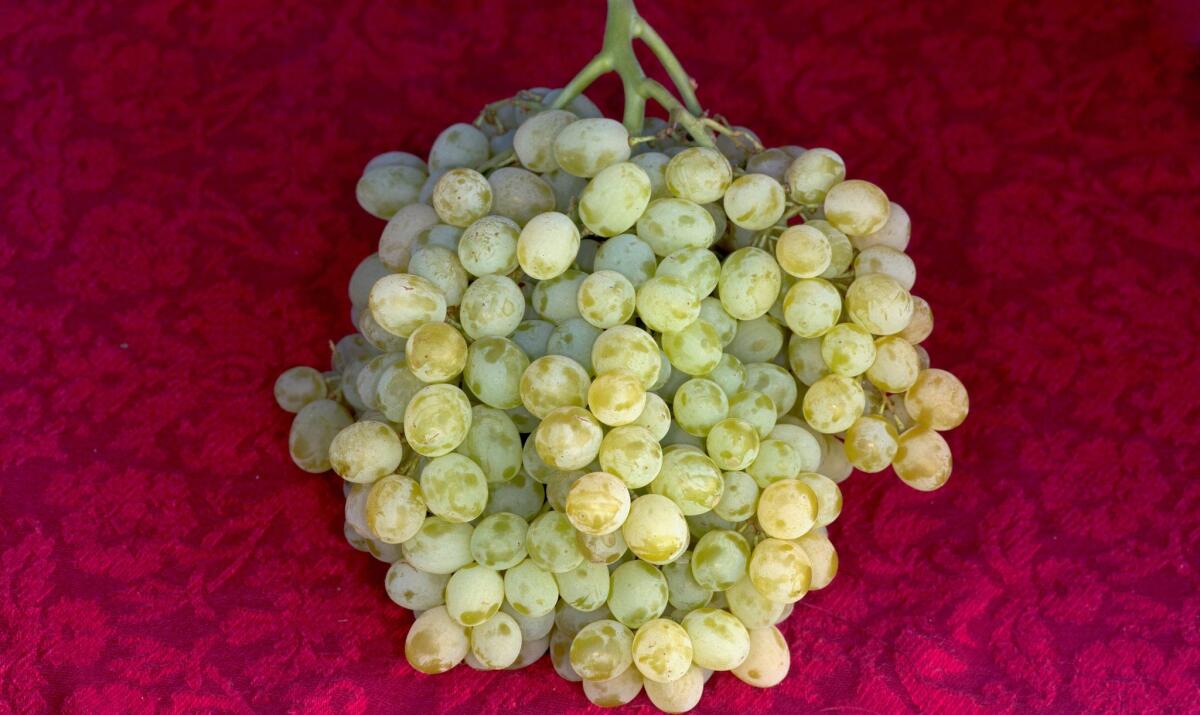Buy This Now: Grapes, with 11 recipes

Thompson seedless grapes
I’m on a quest to restore the Thompson seedless grape to the reputation it so richly deserves. Wish me luck.
You may wonder what I’m going on about if all you’ve ever had are those hard green Thompsons you find at the grocery store. But trust me on this: As much as I love muscats and Concords and Kyohos, a fully ripened Thompson seedless is one of the best grapes you’ll taste.
The trick is looking for the right color. When Thompsons get good, they’re no longer that pale shade of green we know so well. Instead, the green is darker with a golden cast. In fact, they’re almost amber. You’ll probably have to go to a farmers market to find them like that -- they are too inconvenient for most supermarkets to be bothered with. But when you finally get a taste of them, you’ll be amazed.
When fully ripe, the Thompson (called the sultana in Britain) is powerfully sweet with a rich, flowery flavor.
But the Thompson seedless is in real danger. The backbone of the California table grape industry for more than a century, the grape today is relegated mostly to raisins (where it still dominates, with almost 90% of the acreage).
If you see them, buy them. You’ll be doing yourself and the grape-growing industry a great favor.
How to choose: Thompsons don’t start to get really delicious until the color turns golden, almost amber. Don’t be discouraged if the grapes shake off their stems -- avoiding this problem (called “shatter” in the business) is part of what prompted early picking in the first place. With red or black grapes, such as Crimson seedless and Concord, look for grapes that have a rich color and a matte finish rather than being simple and shiny.
How to store: Punch a few holes in the plastic bag in which the grapes came home from the market -- to allow excess moisture to evaporate -- then store them in the coldest part of the refrigerator.
Are you a food geek? Follow me on Twitter @russ_parsons1
ALSO:
Choosing the very best tomatoes
Here’s what’s in season right now
More to Read
Eat your way across L.A.
Get our weekly Tasting Notes newsletter for reviews, news and more.
You may occasionally receive promotional content from the Los Angeles Times.





